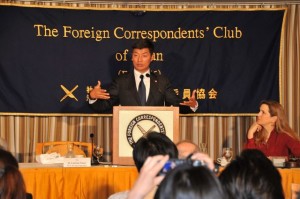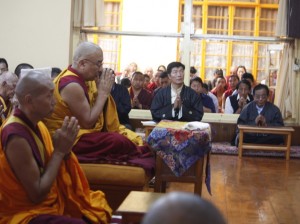The new leadership of the Central Tibetan Administration, headed by Kalon Tripa (Prime minister) Dr. Lobsang Sangay, has completed its first year in office. Dr. Sangay is the first Kalon Tripa to act as political leader of the Central Tibetan Administration (CTA) since HH the Dalai Lama devolved political power to an elected leadership in 2011. It has been an eventful year, filled with both merit and discouragement, and numerous initiatives and projects have been launched.
Developments in the field of education have garnered positive reviews. The CTA recently secured a 2 million dollar education grant from the U.S. government this year. Additionally, a proposal to the Indian Government for transfer of Indian-run Central Schools for Tibetans to the CTA’s administration has been accepted, and the transfer will be complete in 2014.
A strong focus has also been placed on domestic innovation with the introduction of new initiatives within the CTA and the global Tibetan community. Programs like the CTA’s Recruitment Training Program, the Tibet Policy Institute, Tibet Corps, the Tibetan Medicare system and the recent agreement with the Indian government for a relaxed R.C. (Registration Certificate) extension permit for Tibetans residing in India are all products of the administration’s efforts to promote self-sufficiency in the Tibetan exile community.
The area where the new leadership has put muchof its effort but which has, unfortunately, born fewer concrete results is the establishment of a medium of communication between the exile government and its Chinese counterparts. Despite appointing a task force committee for the furtherance of dialogue and angling the majority of the CTA’s media and global outreach operations – both direct and indirect – towards Beijing, the response from China has hardly been concrete and seems, so far, to be a one-way effort.
On the other hand, the priority of keeping the spot light on the Tibetan issue has been fruitful as the global media has shown genuine interest, put out accurate reports, and published inspired journal articles on the current Tibet situation. This year’s extensive foreign visits by the Kalon Tripa and members of the Kashag have influenced resolutions being passed in the US Senate and the European Parliament, and as many as one hundred Japanese parliamentarians issuing a public appeal to China to end repressive policies in Tibet.
The 8th of August 2012 marked the one-year anniversary of Dr. Sangay’s tenure as Kalon Tripa. It began with an audience with the state oracles Gadhong and Tsering Chen-nga, followed by a press conference and later a solidarity prayer ceremony for the people still in Tibet.
“I would like to express my deepest appreciation to the governments and people across the world, particularly our kind host, India, for their support,” the Kalon Tripa stated in an open letter to the public. “I pray for the long life of His Holiness the Dalai Lama. We are profoundly grateful for his continued presence and guidance. Finally, to my fellow Tibetans in and outside Tibet, I want to reiterate the current Kashag’s commitment to fulfill our cherished goal of freedom for the Tibetan people, and return of His Holiness the Dalai Lama to Tibet.”
With so many new initiatives in the works, the new administration’s first year has been one of hard work towards future goals, with many important successes. Dr. Sangay’s motto, it seems, is not to let any stone remain unturned. We Tibetans look forward to witnessing the progress of these projects in the years to come.






 Print
Print Email
Email